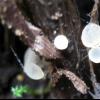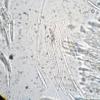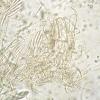
09-01-2026 10:08
 Blasco Rafael
Blasco Rafael
Hola, en el mismo habitat que la anteriorRetamaDia

08-01-2026 21:22
 Blasco Rafael
Blasco Rafael
Hola, He recogido esta muestra de Orbilia sobre Re

07-01-2026 10:24
 Danny Newman
Danny Newman
Pezicula sp. on indet. hardwood Appalachian Highl

07-01-2026 22:22
 Danny Newman
Danny Newman
Tatraea sp. on indet. hardwood The Swag, Great Sm

07-01-2026 17:29
 Marc Detollenaere
Marc Detollenaere
Dear Forum,On a barkless Populus I found some smal

10-11-2021 17:33
 Riet van Oosten
Riet van Oosten
Add-on topic http://www.ascofrance.com/forum/7059

07-01-2026 10:05
 Danny Newman
Danny Newman
cf. Chaetospermum on XylariaCosby Campground, Grea

02-01-2026 17:43
MARICEL PATINOHi there, although I couldn't see the fruitbody, I

04-01-2026 17:45
 Stephen Martin Mifsud
Stephen Martin Mifsud
I was happy to find these orange asmocyetes which
Gelatinous on Carex
Marja Pennanen,
02-09-2010 10:38
I found these on some Carex yesterday.
They are 1-5mm wide and 3-5 mm high.
Marja Pennanen,
02-09-2010 10:43
Marja Pennanen,
02-09-2010 11:35
Hans-Otto Baral,
02-09-2010 12:13

Re:Gelatinous on Carex
Good find!!
The top cell contains a VB, i.e. a refractive vacuole (like in Mollisia). If you add KOH or MLZ these VBs disappear, also in the herbarium.
This species is Ombrophila pileata (= Hymenoscyphus pileatus). Gel and apical ring tpye clearly exclude Hymenoscyphus, still the current name in IF (although I corrected to Ombrophila already in 1985). The problem is only that in Karsten's type material which I studied is a mixtum: it contains also a very similar species with distinctly smaller and narrower and rather strongly curved spores, O. lacustris. regrettably, Karsten's is not clear in this point, giving +/- both spore types. So I have to select one of them as lectotype.
Zotto
The top cell contains a VB, i.e. a refractive vacuole (like in Mollisia). If you add KOH or MLZ these VBs disappear, also in the herbarium.
This species is Ombrophila pileata (= Hymenoscyphus pileatus). Gel and apical ring tpye clearly exclude Hymenoscyphus, still the current name in IF (although I corrected to Ombrophila already in 1985). The problem is only that in Karsten's type material which I studied is a mixtum: it contains also a very similar species with distinctly smaller and narrower and rather strongly curved spores, O. lacustris. regrettably, Karsten's is not clear in this point, giving +/- both spore types. So I have to select one of them as lectotype.
Zotto
Marja Pennanen,
02-09-2010 12:23
Re:Gelatinous on Carex
Thank you for det. and explanations :)
Marja
Marja



